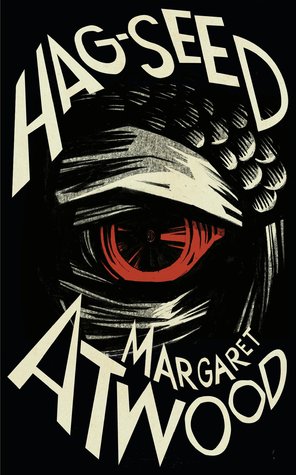Our book group choice for March 2017 is Hag Seed: The Tempest Retold by Margaret Atwood. Hag-Seed is a re-visiting of Shakespeare’s play of magic and illusion, The Tempest, and will be the fourth novel in the Hogarth Shakespeare series.
Hag-Seed is a modern retelling of William Shakespeare’s The Tempest, set in the world of theater. The novel follows the story of Felix, a once-celebrated theater director who is forced to resign from his position at the Makeshiweg Theatre Festival after being betrayed by his right-hand man, Tony.
Felix is devastated by his fall from grace, and he retreats to a remote cabin in the woods, where he spends his days drinking and talking to the ghost of his dead daughter, Miranda. Twelve years later, Felix is offered a job teaching theater to inmates at the Fletcher County Correctional Institution. He sees this as an opportunity to rebuild his life and to exact revenge on Tony, who is now a minister in the government.
Felix decides to stage a production of The Tempest with the inmates, using the play as a vehicle for his own redemption. He casts himself as Prospero, the exiled Duke of Milan, and he casts Anne-Marie, the actress who was originally supposed to play Miranda in his original production of the play, as Miranda.
As the play progresses, Felix begins to heal from his past trauma. He learns to forgive Tony, and he comes to terms with the death of his daughter. He also realizes that the inmates are not as different from him as he thought they were. They are all capable of great love, great loss, and great redemption.
In the end, Felix’s production of The Tempest is a success. The inmates give a moving performance, and the audience is moved by their story. Felix has finally found redemption, and he has learned that art can be a powerful force for healing.
The novel explores a number of themes, including:
- Revenge: Felix’s desire for revenge is a driving force in the novel. He initially sees his production of The Tempest as an opportunity to get back at Tony, but he eventually realizes that revenge is not the answer.
- Redemption: Felix’s journey is one of redemption. He begins the novel as a broken man, but he eventually learns to forgive Tony and to move on with his life.
- Art as therapy: Art can be a powerful force for healing. Felix uses The Tempest to help him heal from his past trauma, and he also uses it to help the inmates heal from their own traumas.
- The power of forgiveness: Forgiveness is a powerful force. Felix eventually learns to forgive Tony, and this allows him to move on with his life.
Discussion Questions Hag-Seed: The Tempest Retold
- In the original Tempest, Prospero was a magician, and a stage impresario of sorts: he “directs” a storm to strand his rivals on the island. He also stages artifice by arranging a play within a play and manipulating Ferdinand to fall in love with Miranda. In Atwood’s version, how does Felix parallel the “role” of Prospero? How is he, as an impresario, similar to Prospero? How does he differ?
- What is the root cause of Felix’s almost maniacal revenge?
- How do Felix and his inmate-actors work together to shap the play and further Felix’s plot? Talk about the way in which the director and cast make use of the scant resources offered by the prison.
- Critics have long referred to The Tempest as “self-referential,” that within the play Shakespeare sometimes winks at the audience. He revels in the power of the playwright and actors to create a false reality that reflects and enlarges the true reality of his audience. In what way is Hag-Seed self-referential?
- What do you think of the ending? Some find it a little too neat and others over-the-top. What do you think?
Individual Comments
DKB's Rating 





